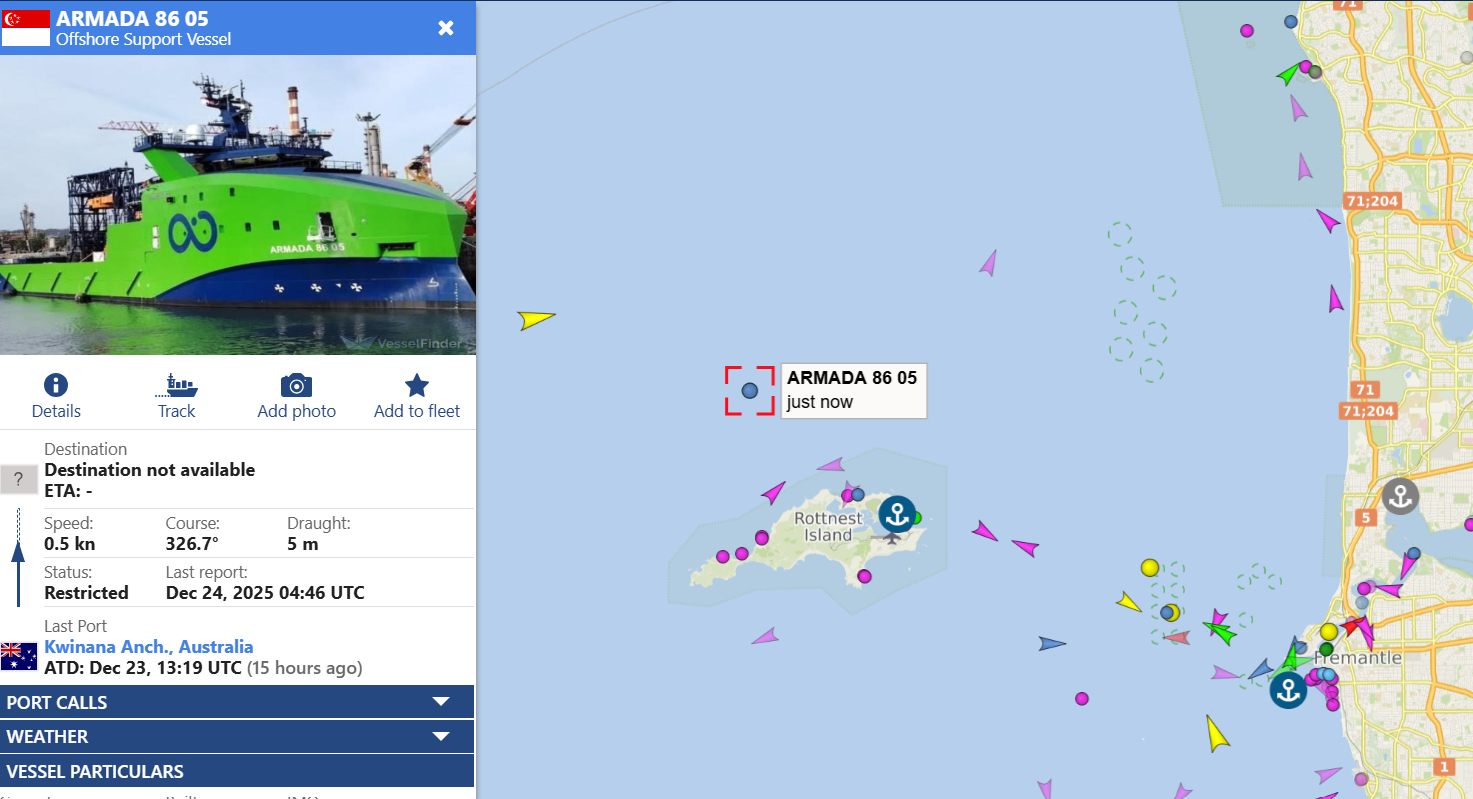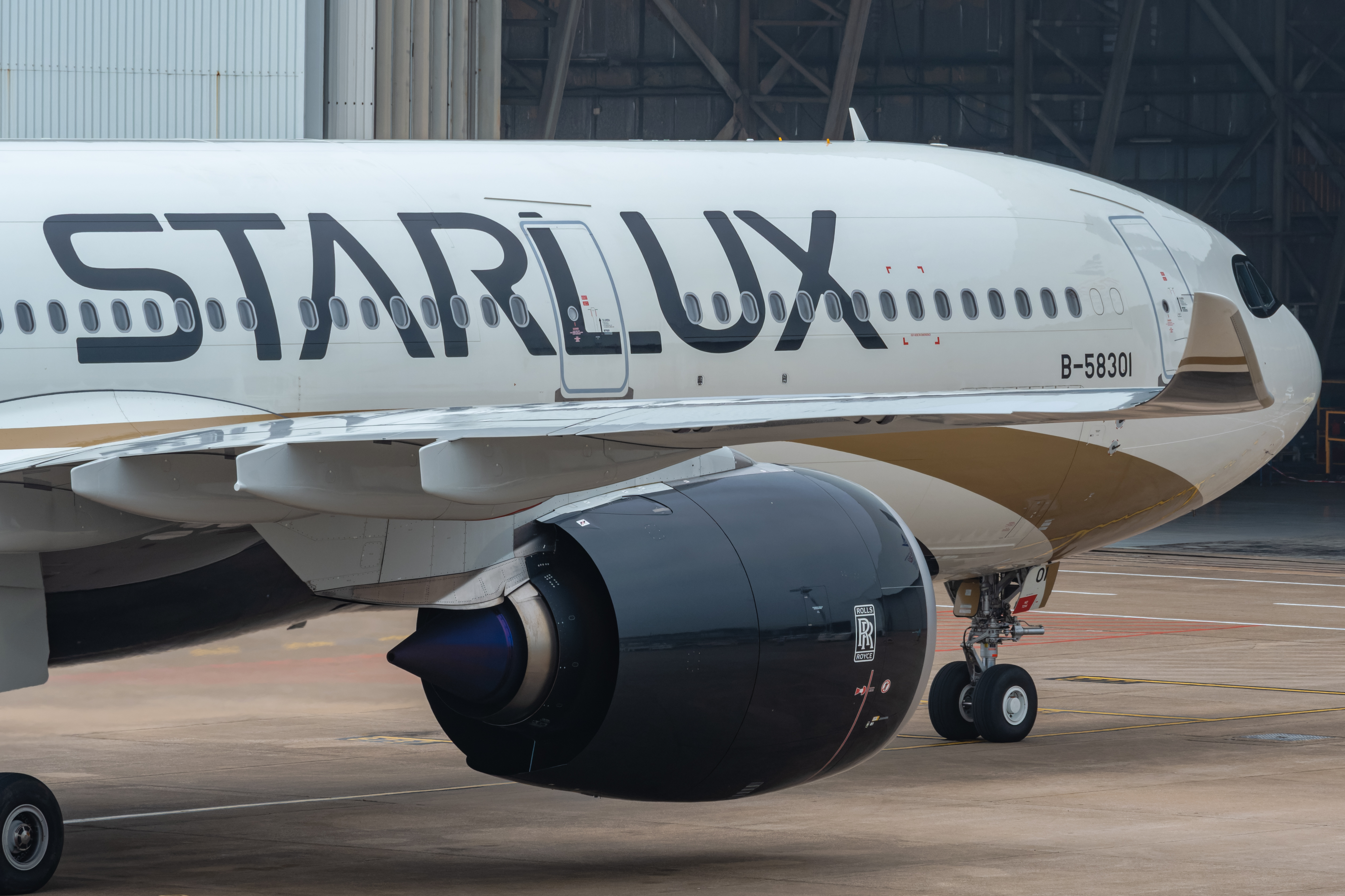
By Airline Ratings
Published Tue Aug 12 2025
While global aviation safety continues to trend positively, statistics released this week by the International Civil Aviation Organization (ICAO) highlight the urgent need to strengthen and expand international cooperation on key safety priorities—particularly as global flight volumes climb.
According to the 84 page ICAO 2025 Safety Report “State of Global Aviation Safety”, there were 95 accidents involving scheduled commercial flights in 2024, up from 66 in 2023. Ten of these accidents were fatal, resulting in 296 deaths compared to 72 the year before. The global accident rate also rose to 2.56 accidents per million departures, from 1.87 in 2023.
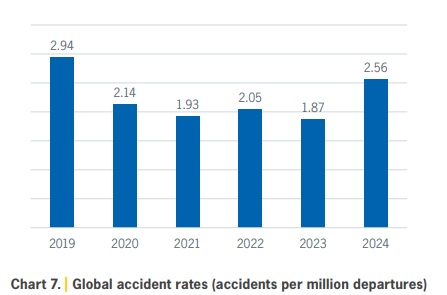
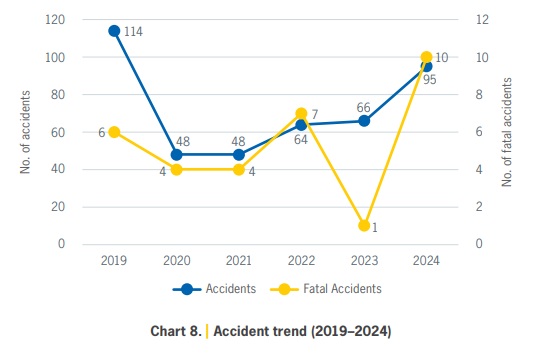
AirlineRatings CEO Sharon Petersen said, “The graphs (above) at first glance show an upward trend in accidents and fatalities, but we really need to exclude the years 2020 and 2021, when there was very little air traffic, and compare the trends from 2019 to 2023 and onwards. This reveals a far more positive trend.”
Between 2019 and 2024, the highest number of accidents was recorded in 2019, with 114 accidents. Compared to 2023, both the total number of accidents and the number of fatal accidents increased in 2024. When breaking down the data, ICAO highlighted that turbulence was responsible for almost 75% of serious injuries in 2024, underscoring a critical need for improved weather reporting, especially for clear air turbulence (CAT). Bird strikes were the leading cause of fatalities, followed by loss of control in flight.
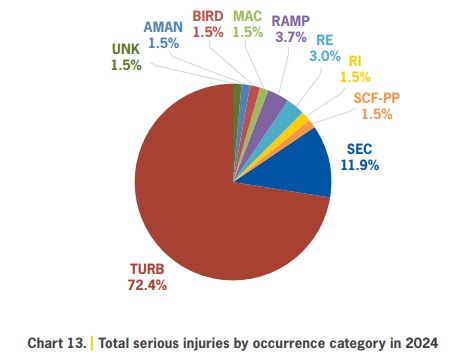
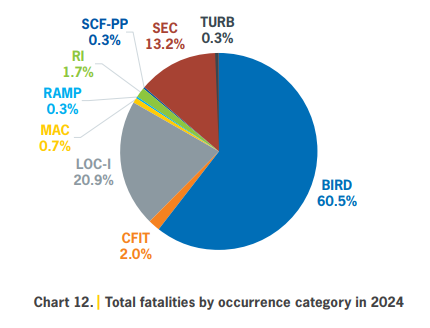
To address these and other emerging risks, ICAO is implementing targeted initiatives and you can read a summary of these here .
Global runway safety action plans aim to reduce excursions and incursions, while advanced real-time turbulence monitoring systems will help operators better anticipate and avoid severe weather.
The report also flags the increasing threat of Global Navigation Satellite System (GNSS) radio frequency interference. ICAO is responding by developing enhanced guidance on spoofing and jamming mitigation, updating navigation manuals, and working with partners to establish protective frameworks for GNSS integrity.
Improved systems for reporting accidents, incidents, and wildlife strikes are strengthening data-driven safety management, enabling earlier identification of emerging risks. ICAO also reports progress in transparency and the application of lessons learned from past events.
The organization further stresses the importance of strengthened civil-military cooperation to mitigate conflict-related risks. Looking ahead, ICAO is preparing safety frameworks for integrating unmanned aircraft and advanced air mobility vehicles into conventional airspace—a key focus of this year’s report.
Regionally, both the Asia-Pacific and Europe/North Atlantic regions recorded three fatal accidents in 2024, while a single event in South America caused 62 fatalities. The Asia-Pacific region reported the highest total fatalities, followed by South America and Europe/North Atlantic. The report details the factors influencing these outcomes and the role of ICAO Regional Offices and support mechanisms in sustaining and improving safety performance across all regions.
You can read the full report here
Have questions or want to share your thoughts?
Get In Touch
